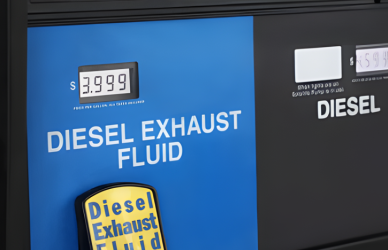If you’re considering adding electric trucks to your fleet, it’s essential to involve utilities in the process early on. Why? Because they can provide invaluable insights into infrastructure requirements, costs, and facilitate timely charger installation.
In addition, collaborating with utilities helps educate fleets on the basics of using electricity as a fuel – a cost-efficient alternative to diesel and gas. Charging overnight when grid demand is lowest makes the switch to electric trucks even more appealing.
Southern California Edison offers businesses an educational webpage on EV adoption, specifically highlighting their Charge Ready programs for light and medium/heavy-duty fleets. In addition, a new submeter billing system for EV charging will soon be available, streamlining accounting processes.
While utilities are a reliable source for EV additions to fleets, it is often overlooked to also educate oneself on EV batteries as their performance and upfront cost are tightly connected. Key factors such as return on investment and risk management should also be considered.
Choosing a battery with enough power to meet duty cycle demands is crucial, especially with environmental factors such as extreme weather and driver habits affecting range. It would seem that investing in a more powerful battery may ultimately provide better returns and risk management.
Investigating battery liability is also crucial for fleet managers. The choice of a battery with higher energy density may pose risks due to its chemistry. However, automotive manufacturers like Ford, Tesla, and Rivian advocate for lithium iron phosphate (LFP) batteries due to their reduced flammability risk and lower cost compared to nickel manganese cobalt (NMC). It is wise to opt for safer battery chemistry to prevent thermal events in EV batteries.
It is important to manage your battery investment effectively. Utilizing AC overnight charging can help preserve battery life, maximize range, and reduce charging costs compared to DC fast charging. Invest in battery management software to optimize charging and get the most out of your battery.
Planning ahead for battery retirement is crucial. Explore second-life use cases where batteries can be used for energy storage. Stationary battery banks may support office electricity needs or power other EVs in a microgrid setting. Companies like Dependable Highway Express in Ontario, California, have adopted this model with success.
Companies not interested in this option may still find value in used EVs as other companies may take advantage of their less demanding duty cycle. Ensuring efficient and responsible battery management benefits the environment and overall EV market.
Battery recycling is an important consideration for fleet managers, especially for the future when current managers have retired. While lead acid batteries are commonly recycled and recyclable, lithium-ion batteries are more complex and made of critical minerals.
To address this, Li-Cycle is expanding recycling facilities in the U.S. and Canada and producing recycled battery grade materials. As recycling efficiency for lithium-ion batteries increases, more opportunities will emerge for fleets.
For those who do not want to manage battery lifecycles, electric vehicles as a service may be an option.
Overall, battery spec’ing and lifecycle management are crucial topics that demand more attention from fleet managers.
Source: CCJ Digital











